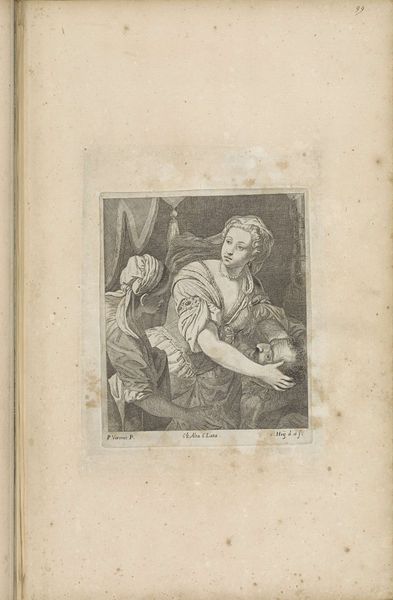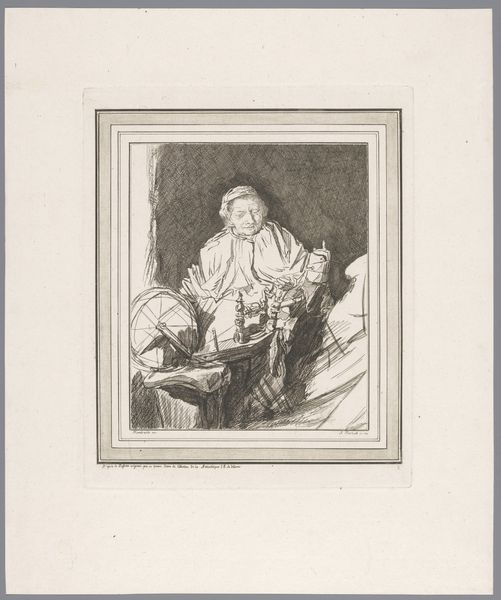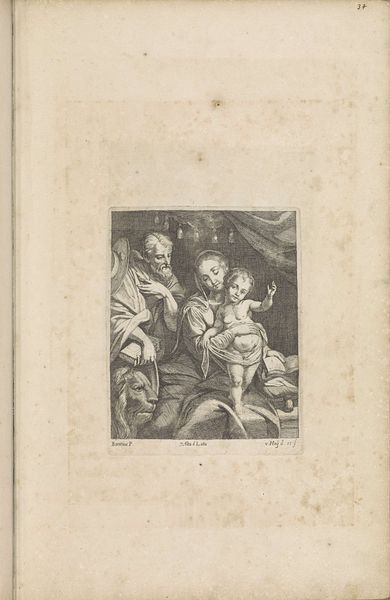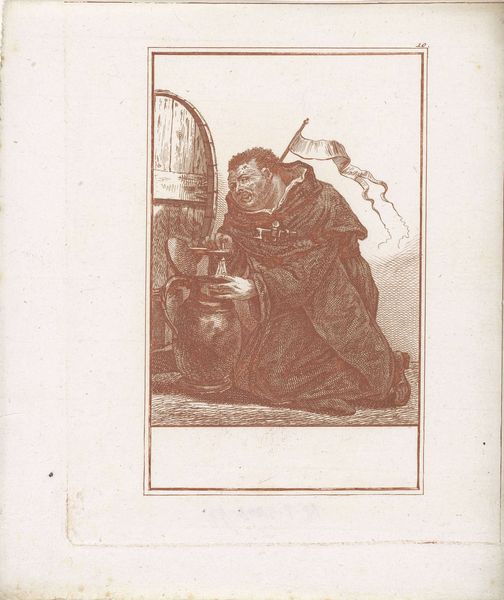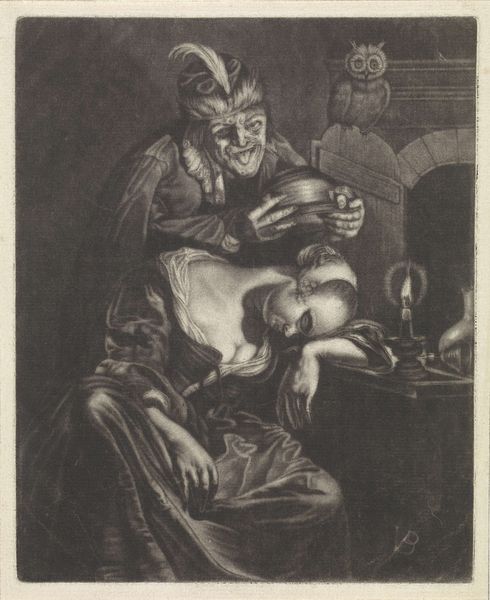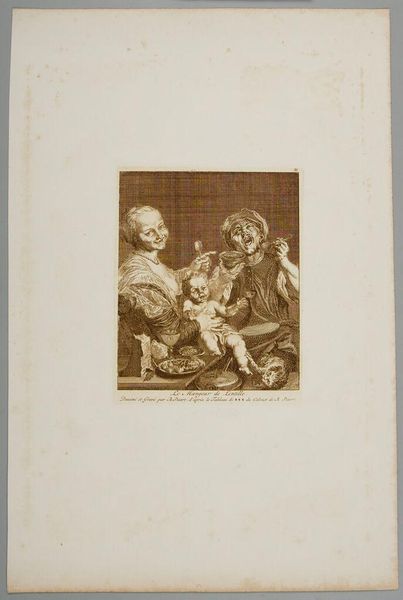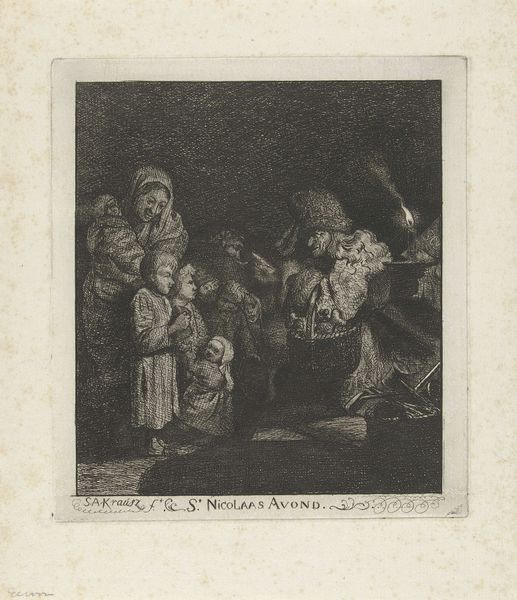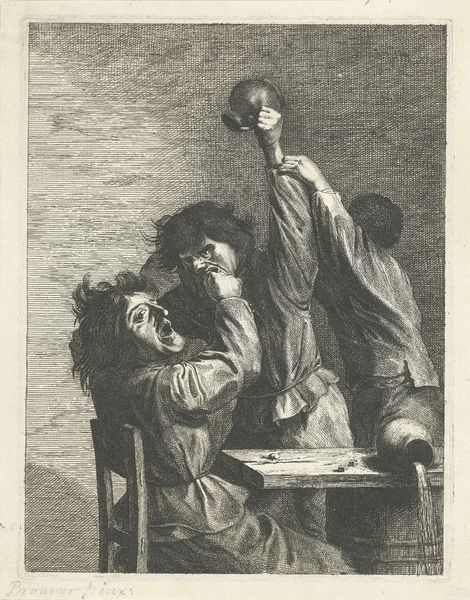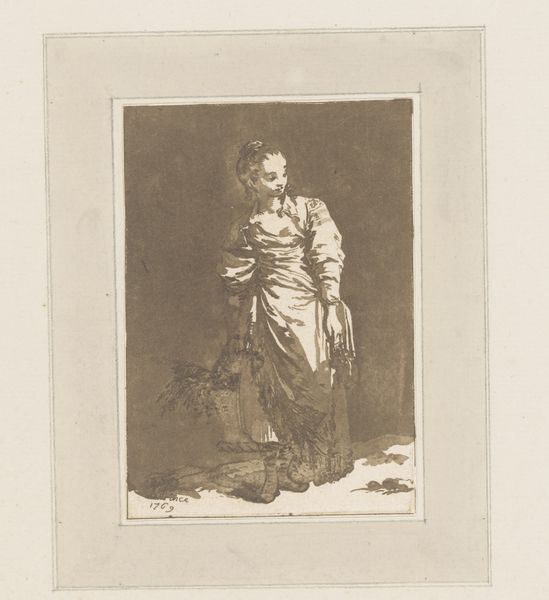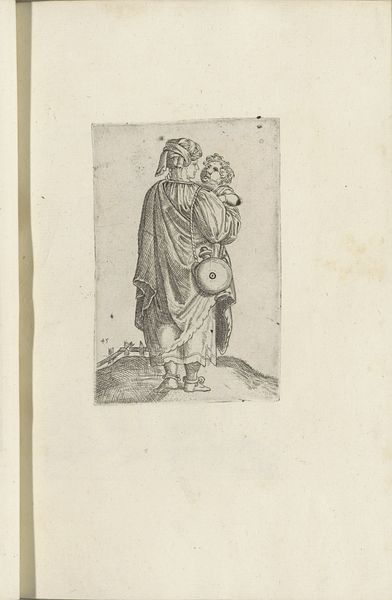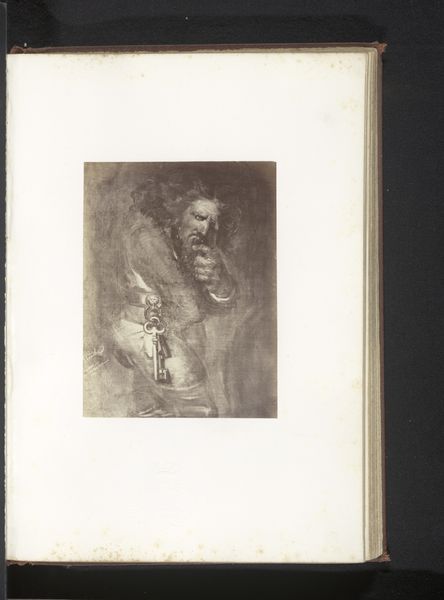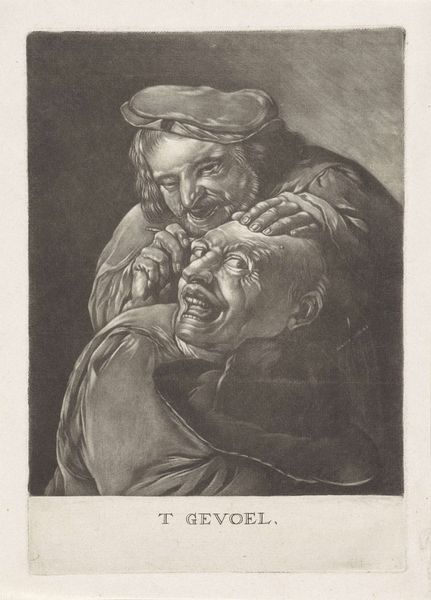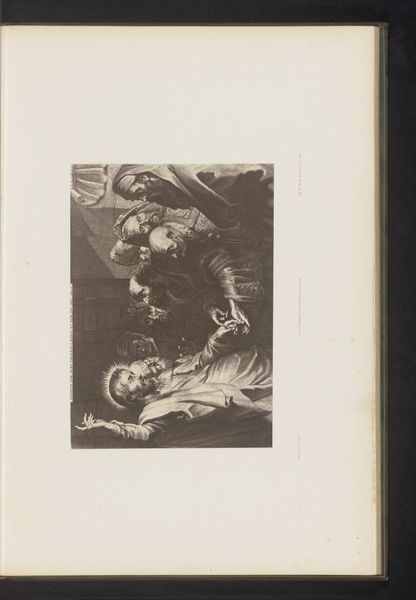
etching
#
portrait
#
baroque
#
etching
#
old engraving style
#
figuration
#
line
#
genre-painting
#
history-painting
Dimensions: height 223 mm, width 173 mm
Copyright: Rijks Museum: Open Domain
Jan van Troyen made this print, Judit met het hoofd van Holofernes, sometime in the 17th century using etching. Etching involves drawing into a wax ground on a metal plate, then bathing it in acid, which bites away the exposed lines. Look closely, and you'll see the quality of the marks made by this fairly indirect process, which is different from a drawing made directly with a pen or burin. You'll also see a tonal range created by manipulating the density of the etched lines. Etchings like this were often made in series, and sold in unbound folios. This brings up the question of artistic labor: while van Troyen designed the image, it was actually etched by a specialist printmaker, I. Suyderhoef. This division of labor reflects the realities of the art market in the 1600s, where prints served as a means of circulating images widely. Appreciate the skill and effort required to produce this small but powerful image, and the collaborative nature of its making.
Comments
No comments
Be the first to comment and join the conversation on the ultimate creative platform.
